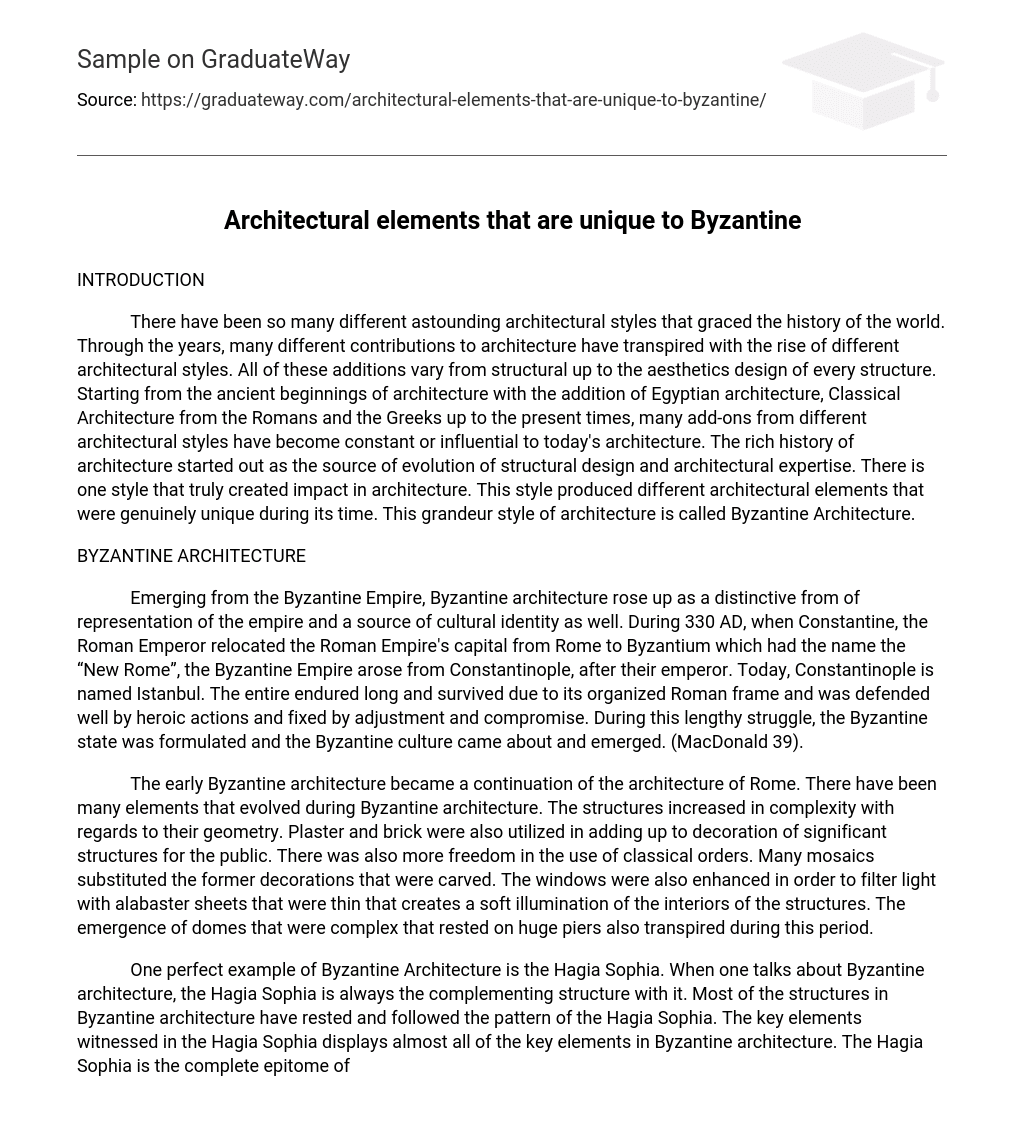INTRODUCTION
There have been so many different astounding architectural styles that graced the history of the world. Through the years, many different contributions to architecture have transpired with the rise of different architectural styles. All of these additions vary from structural up to the aesthetics design of every structure. Starting from the ancient beginnings of architecture with the addition of Egyptian architecture, Classical Architecture from the Romans and the Greeks up to the present times, many add-ons from different architectural styles have become constant or influential to today’s architecture. The rich history of architecture started out as the source of evolution of structural design and architectural expertise. There is one style that truly created impact in architecture. This style produced different architectural elements that were genuinely unique during its time. This grandeur style of architecture is called Byzantine Architecture.
BYZANTINE ARCHITECTURE
Emerging from the Byzantine Empire, Byzantine architecture rose up as a distinctive from of representation of the empire and a source of cultural identity as well. During 330 AD, when Constantine, the Roman Emperor relocated the Roman Empire’s capital from Rome to Byzantium which had the name the “New Rome”, the Byzantine Empire arose from Constantinople, after their emperor. Today, Constantinople is named Istanbul. The entire endured long and survived due to its organized Roman frame and was defended well by heroic actions and fixed by adjustment and compromise. During this lengthy struggle, the Byzantine state was formulated and the Byzantine culture came about and emerged. (MacDonald 39).
The early Byzantine architecture became a continuation of the architecture of Rome. There have been many elements that evolved during Byzantine architecture. The structures increased in complexity with regards to their geometry. Plaster and brick were also utilized in adding up to decoration of significant structures for the public. There was also more freedom in the use of classical orders. Many mosaics substituted the former decorations that were carved. The windows were also enhanced in order to filter light with alabaster sheets that were thin that creates a soft illumination of the interiors of the structures. The emergence of domes that were complex that rested on huge piers also transpired during this period.
One perfect example of Byzantine Architecture is the Hagia Sophia. When one talks about Byzantine architecture, the Hagia Sophia is always the complementing structure with it. Most of the structures in Byzantine architecture have rested and followed the pattern of the Hagia Sophia. The key elements witnessed in the Hagia Sophia displays almost all of the key elements in Byzantine architecture. The Hagia Sophia is the complete epitome of Byzantine architecture and it displays the quality and uniqueness of Byzantine architecture.
The Hagia Sophia has a very large dome in the middle part of the structure. The form of the dome is unique and it also rests on 4 pillars that are massive and arranged in a form of a square. The dome has remained as the focal point of Byzantine churches for all the history of the Byzantine empire. The Hagia Sophia worked well with the religion and worship of people during the Byzantine empire that’s why the Hagia Sophia has become the perfect example of Byzantine architecture, mostly of all their churches.
CONCLUSION
The form of the dome that emerged during the Byzantine architecture has served effective and has become a source of inspiration for the architects that followed that style of architecture. The contributions of Byzantine architecture still holds up until today and the Hagia Sophia still continues to be one of the most fascinating works of architecture in the history of mankind.
WORKS CITED
Gietmann, Gerhard. “Byzantine Architecture.” The Catholic Encyclopedia. Vol. 3. New York: Robert Appleton Company, 1908. 25 Jul. 2008 <http://www.newadvent.org/cathen/03094a.htm>.
MacDonald ,William L. Early Christian & Byzantine Architecture. New York: George Braziller, 1962.
Rice, David Talbot. Art of the Byzantine Era. New York: Praeger, 1963.





